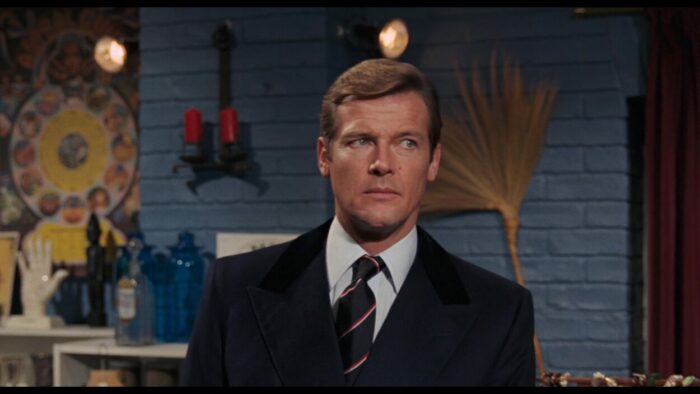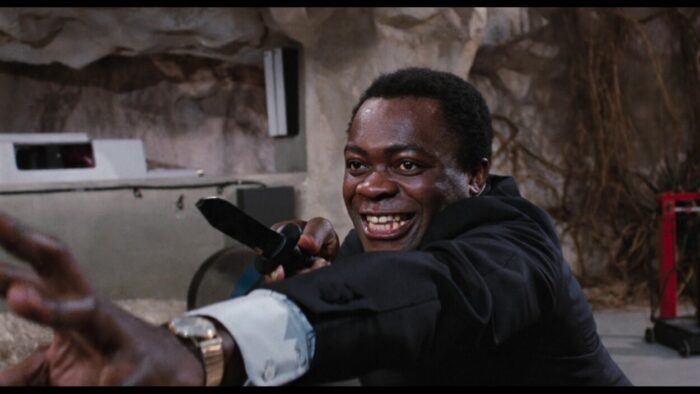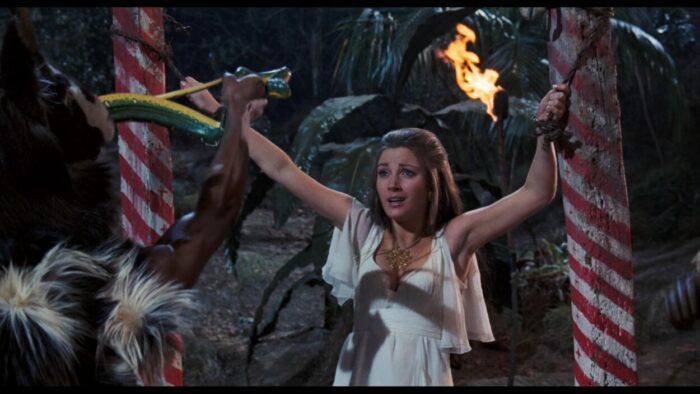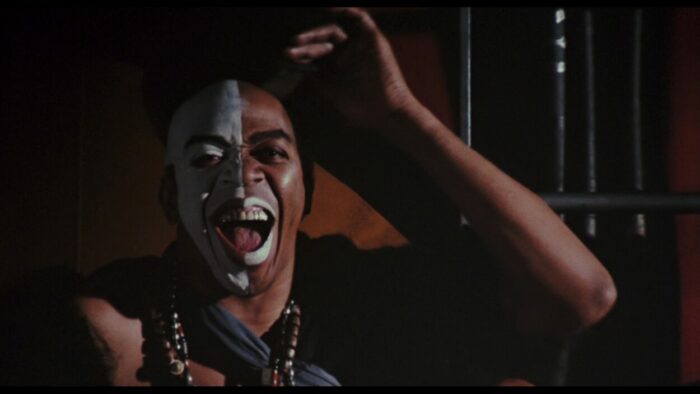By the time Roger Moore finally played James Bond for real, in 1973’s Live and Let Die, his casting felt something of a fait accompli. The suave British actor had been rumored for the role for much of his six-season run as Simon Templar on The Saint (1962-69), though the Eon producers thought him a bit “too young, too pretty” for the role in Dr. No (1962) that went to, and stayed with, the rougher-hewn Sean Connery, who made the character what he became: Britain’s most famous superspy. Though in some respects he tried, Connery could not stay James Bond forever: he left the franchise in 1966, leaving the Australian George Lazenby to carry On Her Majesty’s Secret Service, returned in 1971 for Diamonds Are Forever, and even once again in 1983 in the non-Eon Thunderball remake Never Say Never Again.

Following Diamonds Are Forever, the Eon producers were faced again with a challenge they had just a few years prior: recasting a character Connery had made famous. Their first attempt to do so, with Lazenby, hadn’t exactly worked out when the Australian model-turned-actor surprisingly turned his back on the franchise, and so, hedging their bets, they turned to the one actor that had since the beginning been in consideration for the role—Roger Moore—hoping to revitalize James Bond for the 1970s. It was a calculated gamble, one that did the job, even if it took the character and the vehicle for it in a new and not always profitable direction. Debuting in cinemas 50 years ago, the “new” James Bond was already a bit out of time, out of place, and in danger of running out of gas.
Live and Let Die was, though, a perfectly respectable success at the box office. In fact, it did just what its makers needed it to do: get audiences reinvested in the franchise and back in the theaters. On its seven million dollar budget it earned over $100 million in receipts. All eyes were on Moore, considering Connery had made the role his own and Lazenby failed to make any impression on his single turn. And Moore was not Connery. Moore, a suave and sophisticated Brit known for his good looks, Brylcreemed coif, and arched eyebrow, wasn’t the imposing physical presence Connery had been, nor was he as rough around the edges.
Rather, Moore’s was a smooth, stylish, unflappable confidence, his perpetually arched eyebrow signaling a detached bemusement with the proceedings. Moore’s incredulity seemed something of a metatextual wink at the audience: he too knew it was all shenanigans. Connery’s Bond would likely dive in a pit to wrestle an alligator bare-handed; Moore’s, as he does in his debut, will skip adroitly over their heads without wetting his stylish loafers. Already 45 by the time of filming, Moore confessed to having to train for the role like he had for no other; he was, nearly as soon as he took the role, facing questions whether he, like the man he replaced, was already too old for the part.
If Moore was not Connery, his James Bond was not the James Bond of the 1960s. Live and Let Die took the franchise to the streets of the ’70s. The novel on which was based had been ignored in the prior decade, but the producers were ready to take their Bond to challenge new faces in new places. Published in 1954, the second in Ian Fleming’s series, Live and Let Die was written based on the author’s travels in the United States and Jamaica, where he kept an estate, and unlike the later books in the series that were adapted for the Connery films, Live and Let Die had little to do with techno-gadget-wizardry or lavish plans for world dominion. Though international, it remained smaller and more tightly focused in scope, a relatively straightforward pursuit of villainous drug trafficker and his captive clairvoyant assistant.
Fleming’s “Mr Big” had no ambitions to rule the world, only to sell off a cache of 17th-century gold coins to the highest bidder. Trafficking drugs and conspiring with SMERSH was merely his means to an end. Like many of Fleming’s later adversaries, a physical abnormality signaled his villainy: even though he was Bond’s intellectual equal or better, he was still a man with a “great football of a head, twice the normal size and very nearly round” and skin “grey-black, taut and shining like the face of a week-old corpse in the river.” As Bond baddies go, Mr Big is neither especially ambitious nor, aside from his race (and in the film a game performance by Yaphet Kotto) all that memorable.

Mr Big’s captive assistant, the Tarot-card reading clairvoyant named “Solitaire,” who can, so long as she serves her boss, anticipate Bond’s moves before they happen. That particular superpower alone keeps Mr Big at bay for a time; other than that, Solitaire has no discernible personality other than her falling for her would-be rescuer in Bond. From Fleming to the film, Jane Seymour brings her beauty, a perpetual look of worry, and a spectacular support bra, but no further character traits. Like so many “Bond girls” of her era, she serves primarily as a plot device, and onscreen, as window dressing, there to be bedded, rescued, and bedded again.

Fleming’s novel is something of an anomaly in his 007 series, taking place as it does in Harlem, Florida, and Jamaica, and featuring a prominent Black adversary. The film leans into Blackness in ways no Bond film had or would again: not only in bringing along secondary Black characters from the book like the hook-handed henchman TeeHee (Julius W. Harris), but also inventing the role of CIA double agent Rosie Carver (Playboy Playmate Gloria Hendry), the first Black Bond girl (even if she is killed off nearly immediately after being seduced by Bond, who turns his eye to Solitaire mere hours after Carver’s death). In the novel, Mr Big is presumed a modern-day Baron Samedi; in the film Geoffrey Holder plays the actual voodoo chief as a secondary villain in his own right, one who performs rituals like Solitaire’s sacrifice, and he is given a featured spot in the non-diegetic credit sequence, laughing at the camera.

This sudden flush of Black characters in the Bond franchise follows the success of the American films Shaft, Superfly, and Slaughter in 1971 and 1972, each of them in turn following Sweet Sweetback’s Baadasssss Song. Those films and dozens like them, big hits at the box office made for next to no money, featured all or mostly-black casts in an era when such was rare, but they served only to profit the studios that made them. Blaxploitation, as Junius Griffin coined the portmanteau that stuck, characterized the unequal power dynamic that saw studios run by white men making serious money off the Black men and women cast in the films and the Black moviegoers who supported them. After Sweetback‘s independent success, none of these films, despite their popularity, led to better or more equal representation or opportunity in the industry. (A good primer among many: Elvis Mitchell’s Is That Black Enough for You?)
Live and Let Die, in the wake of this sudden bottom-line popularity of films populated by Black characters, followed suit. The cast is excellent and the characters memorable. Bond is a fish out of water, a stylish, suave Brit who finds himself in a Black American and Jamaican culture he finds curious and exotic. To its credit, the film accomplishes an integration many American films were still striving for five decades later, even if it is still Bond’s show: his distinctly British bemusement at Black people, language, and customs drives the film’s culture-clash humor. The film’s plot borrows a narrative conceit too from Blaxploitation: Mr Big’s trafficking hinges on his hooking urban users on free drugs he will use to build an empire.
If the franchise’s sudden interest in Black cultures and characters was a distinguishing feature of Live and Let Die, it also made caricatures of white Southerners, in particular the blustering J. W. Pepper sheriff character played by Clifton James (who reprised the role in 1974’s The Man with the Golden Gun). His broad comic relief undermines some excellent speedboat action sequences set in Florida as Mr Big’s henchmen pursue Bond after his escape from the alligator pit. But Bond was never a franchise known for subtlety, and Live and Let Die was not the least bit shy about embracing bombast.
The film was also the first in the franchise scored without any input or assistance from John Barry. The producers took a calculated risk in approaching ex-Beatle (as he was known then) Paul McCartney for the theme song. At the time, McCartney’s solo career was largely adrift. He’d been largely pilloried in the press for the Beatles’ breakup and none of his solo records had met with acclaim. In the U.S., “Uncle Albert/Admiral Halsey” was a surprise no. 1, but he was better known for a string of critical and commercial failures, beginning with the lo-fi McCartney and then-unheralded Ram albums, then the awkward and polarizing singles “Give Ireland Back to the Irish” and “Mary Had a Little Lamb.” His fledgling group Wings had suffered a disastrous debut with Wild Life and was only just beginning to find its footing with the mawkish hit “My Love.” In short, McCartney was at the time as uncool as they come, having struggled through the most difficult period in his life, a phase to be traced in the upcoming documentary Man on the Run.
Every James Bond film since the first had featured both the signature electric guitar James Bond theme and its own (usually if not always title-based) theme song. The recent documentary The Sound of 007 provides a decent, if self-congratulatory, overview. Some of these had been memorable, especially Shirley Bassey’s gloriously lurid “Goldfinger,” others less so, but they had been since 1964 a staple as essential to the franchise as formalwear, espionage, or seduction. Approaching McCartney, as Beatles producer George Martin told the story, the producers did not even imagine the film would actually feature his voice; that, it turns out, was a fiction: they contracted McCartney to compose and perform a theme they could then also assign to a singer of their choice.
What McCartney and his co-credited wife Linda gave them was so peculiar, so original, and so bombastic that the producers had little choice but to use it in the opening title sequence exactly as performed by them and Wing. Their “Live and Let Die”—still, 50 years later, a rousing flashpot-and-laser encore feature of the ageless octogenarian’s performance sets—is like no other Bond theme, and it is essential McCartney, reconnected with Martin. It’s a bizarre mishmash of musical styles that somehow form a unique whole, a technique McCartney had employed in his side-two Abbey Road suite, Ram‘s “Back Seat of My Car,” among others (and soon also the gilded crown of his comeback, “Band on the Run”). It features a longing, sentimental verse, a rousing and bombastic chorus, a manic orchestral break, and a weird little reggae jaunt in the middle, not to mention absurd and ungrammatical lyrics to drive a middle-school English teacher mad. “In this world in which we live in,” indeed.
Yet, for all its absurd pastiche, Macca’s “Live and Let Die” song somehow captures the very essence of the film: its zany mood and tempo swings, its casual cultural appropriations, its giddy enthusiasms, its way-too-wacky-to-take-entirely seriously tone. It’s a load of fun, and it’s never worn out its welcome. It became his second straight hit single (reaching #2 on the Billboard charts and #1 on several others) and within six months, the ex-Beatle’s solo career had taken full flight with Band on the Run. The cut was recently remastered for its 50th anniversary by Steve Orchard and Giles Martin in a Dolby Atmos mix, available on most digital download services.
The Bond franchise, meanwhile, was now something other than what it had been in the Connery years. Yes, he too was suave, smart, a survivor, but in comparison to the Connery films, Moore established a lighter touch, lending a wry, detached humor to the proceedings, a winking incredulity that allowed audiences to have a bit more fun at a Bond film than they had ever before. Moore played Bond for another six films stretching into the mid-80s, reaching 58 in A View to a Kill, before the franchise turned back to a grittier tone once again with Timothy Dalton. Later, Pierce Brosnan would update Moore with a similar cheek and style, and the franchise would oscillate back towards the gritty in the now-concluded Daniel Craig years. Just as it had been when Connery ended his run, discussions of who will be next tend to run to the fever pitch.
Live and Let Die may not be top-tier Bond, especially given the freshness of Connery’s first roles and the excellence of some of Daniel Craig’s outings. But it did, for a time in 1973, successfully reinvigorate the franchise for a new decade. It’s a bit of a weirdo one-off for the franchise—there’s no surprise Bond didn’t stick around Harlem, Florida, and Jamaica to solve drug trafficking crimes and fight Voodoo priests—and its curious condescension towards its Black characters and cultures does not wear well, but Live and Let Die remains, fifty years later, the film that got James Bond back on his feet and the franchise’s fans back in the theaters.



